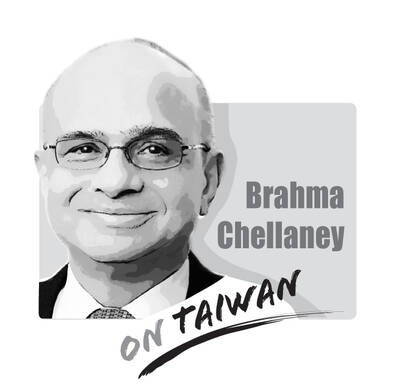On March 27, the Chinese-language Beijing News reported that Jiangxi Province police officers, whose duties include enforcing measures to contain the spread of COVID-19, clashed with police from Hubei Province on a bridge at the border between the two provinces.
The incident arose because the Jiangxi police were blocking people from Hubei from entering Jiangxi, including a large number of migrant workers who wanted to return to work.
The crowd started shouting “keep going, Hubei,” attacked the Jiangxi police and overturned police vehicles.
The clash highlights points raised in a March 24 opinion piece in the People’s Daily, headlined: “Respect science: Drop the preoccupation with ‘zero increase’” — meaning the target of reaching zero new COVID-19 cases.
The writer asked: “Might some localities make false reports about the epidemic situation to give the appearance of having achieved ‘zero increase,’ in order to restart work and production or just for the sake of ‘political correctness?’”
The dispute on the bridge reflects three underlying problems:
First, there is a lack of trust between local authorities. The people from Hubei who wanted to enter Jiangxi Province were carrying “health green QR codes” issued by Hubei authorities, as required by the Notice Concerning Strict Implementation of Regulations Concerning the Entry of Persons into Jiujiang City.
However, Jiangxi evidently did not recognize this certification.
Second, local authorities lack trust in the national government. China’s central government had declared that Hubei had achieved zero new COVID-19 cases, and the government had officially lifted the lockdown on Hubei Province and its capital, Wuhan.
Nevertheless, Jiangxi did not believe the figures released by the central authorities. Jiangxi officials felt that letting people from Hubei enter their province would make it more difficult for them to achieve the political goal of a “zero increase” in cases.
The third problem is China’s culture of falsification, of which its concealment of the outbreak is just the tip of the iceberg.
The deep-seated reason for this incident is not just that Jiangxi Province knows full well that the figures announced by the central authorities and Hubei Province are likely not true.
Jiangxi is not the only local government that distrusts the official figures. At the time of writing this article, even the Beijing municipal government is still imposing entry controls on people from Hubei, which effectively refutes the central authorities’ declaration of zero new cases. Few people believe China’s dubious claims about zero new cases.
WHO Director-General Tedros Adhanom Ghebreyesus seems to take China at its word. Sadly, so do the Chinese Communist Party’s (CCP) fellow travelers in Taiwan — people such as former president Ma Ying-jeou (馬英九), and Chinese Nationalist Party (KMT) legislators Wu Sz-huai (吳斯懷) and Sandy Yeh (葉毓蘭).
These fellow travelers have been citing China’s suspect assertions and waving the banner of “human rights” as they criticize Taiwan’s government for taking the precaution of banning Hubei-based Taiwanese businesspeople from returning home.
They are so keen to suck up to the CCP that they even neglect the health and security of 23 million Taiwanese.
When officials and ordinary people in Jiangxi and Beijing see these fellow travelers’ antics, they probably think: “How pathetic those Taiwanese bumpkins are. They do not know what deep water they can get into when dealing with the CCP.”
Yu Kung is a Taiwanese businessman operating in China.
Translated by Julian Clegg
Recently, China launched another diplomatic offensive against Taiwan, improperly linking its “one China principle” with UN General Assembly Resolution 2758 to constrain Taiwan’s diplomatic space. After Taiwan’s presidential election on Jan. 13, China persuaded Nauru to sever diplomatic ties with Taiwan. Nauru cited Resolution 2758 in its declaration of the diplomatic break. Subsequently, during the WHO Executive Board meeting that month, Beijing rallied countries including Venezuela, Zimbabwe, Belarus, Egypt, Nicaragua, Sri Lanka, Laos, Russia, Syria and Pakistan to reiterate the “one China principle” in their statements, and assert that “Resolution 2758 has settled the status of Taiwan” to hinder Taiwan’s

Can US dialogue and cooperation with the communist dictatorship in Beijing help avert a Taiwan Strait crisis? Or is US President Joe Biden playing into Chinese President Xi Jinping’s (習近平) hands? With America preoccupied with the wars in Europe and the Middle East, Biden is seeking better relations with Xi’s regime. The goal is to responsibly manage US-China competition and prevent unintended conflict, thereby hoping to create greater space for the two countries to work together in areas where their interests align. The existing wars have already stretched US military resources thin, and the last thing Biden wants is yet another war.
As Maldivian President Mohamed Muizzu’s party won by a landslide in Sunday’s parliamentary election, it is a good time to take another look at recent developments in the Maldivian foreign policy. While Muizzu has been promoting his “Maldives First” policy, the agenda seems to have lost sight of a number of factors. Contemporary Maldivian policy serves as a stark illustration of how a blend of missteps in public posturing, populist agendas and inattentive leadership can lead to diplomatic setbacks and damage a country’s long-term foreign policy priorities. Over the past few months, Maldivian foreign policy has entangled itself in playing
A group of Chinese Nationalist Party (KMT) lawmakers led by the party’s legislative caucus whip Fu Kun-chi (?) are to visit Beijing for four days this week, but some have questioned the timing and purpose of the visit, which demonstrates the KMT caucus’ increasing arrogance. Fu on Wednesday last week confirmed that following an invitation by Beijing, he would lead a group of lawmakers to China from Thursday to Sunday to discuss tourism and agricultural exports, but he refused to say whether they would meet with Chinese officials. That the visit is taking place during the legislative session and in the aftermath